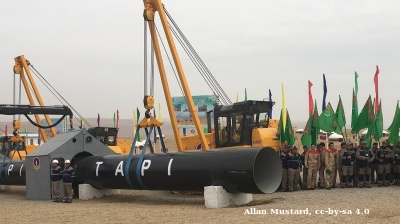Russia’s intense focus on capturing cities in Eastern Ukraine, particularly the major assault on Severodonetsk, has left the Kherson region vulnerable to Ukrainian counter-offensives, the Kyiv Independent reported on June 1.
According to the US think-tank Institute for the Study of War (ISW), Ukrainian forces are withdrawing from Severodonetsk where Russia controls 70% of the city in a “largely symbolic” gain. Instead, Kyiv has recognised Russia’s vulnerabilities in Kherson as the majority of Russia’s forces are currently located in the Donbas region.
“Continuing successful Ukrainian counter-offensives in Kherson indicate that Ukraine’s commanders recognise these realities and are taking advantage of the vulnerabilities that Putin’s decisions have created,” ISW stated. “Both the decision to avoid committing more resources to saving Severodonetsk and the decision to withdraw from it were strategically sound, however painful”.
Although Severodonetsk is not yet fully surrounded, the city is likely to fall under Russian control soon in what will be a big “morale boost” for Moscow but not a major strategic victory, according to the regional governor Serhiy Hayday in an interview with Sky News. However, Russia is close to gaining control over all of the Luhansk region. This could be the moment to pause, with Russia claiming victory over Donbas, and the potential return to peace talks whilst fighting simmers down.

Although Ukraine continues to conduct successful counter-offensives in north-west Kherson, the US State Department warned about Russia’s “attempts to institutionalise control” over the strategically important region in a press conference on May 31. Ned Price, the State Department spokesman, mentioned Russia is likely to take one of two possible steps: recognising a Kherson People’s Republic, similar to the Donetsk and Luhansk People’s Republics; or the annexation of Kherson.
Holding on to Kherson gives Russia a strong position to launch a future invasion against Ukraine as well as control over the freshwater supply to Crimea. Ukraine cut off the canal in the Kherson region after the 2014 annexation which supplied 85% of Crimea’s water needs.
But if Kyiv regains control over the region, that could spell a Ukrainian victory by demoralising Russian troops and putting Ukraine in a strong position to defend itself against future Russian attacks.
The ISW believes Ukraine has a good chance at countering Russia’s attacks and could “reverse the gains Russia is currently making”. As an example of Ukraine’s success, the think-tank points to Kharkiv where Ukrainian forces pushed Russian troops “almost out of artillery range of Kharkiv City”.
In the meantime, life in the Luhansk region continues to struggle on, with no water or electricity and a constant barrage of bombs and shelling. In Severodonetsk, Russia has decimated critical infrastructure with 90% of residential buildings left damaged, replicating the destruction suffered by Mariupol.
"Russians have destroyed all electricity and water substations. People have no water. They shot main gas pipes, they destroyed all our hospitals. Many civilians have died”, Serhiy Hayday said.
Russian Defence Minister Sergey Lavrov described Russia’s battles in Donbas as an “unconditional priority”.
Evacuations from Severodonetsk were reportedly suspended on May 31 as intensive fighting is now taking place in the streets.
Features

Turkmenistan’s TAPI gas pipeline takes off
Turkmenistan's 1,800km TAPI gas pipeline breaks ground after 30 years with first 14km completed into Afghanistan, aiming to deliver 33bcm annually to Pakistan and India by 2027 despite geopolitical hurdles.

Looking back: Prabowo’s first year of populism, growth, and the pursuit of sovereignty
His administration, which began with a promise of pragmatic reform and continuity, has in recent months leaned heavily on populist and interventionist economic policies.

Emerging Europe’s growth holds up but risks loom, says wiiw
Fiscal fragility, weakening industrial demand from Germany, and the prolonged fallout from Russia’s war in Ukraine threaten to undermine growth momentum in parts of the region.

The man who sank Iran's Ayandeh Bank
Ali Ansari built an empire from steel pipes to Iran's largest shopping centre before his bank collapsed with $503mn in losses, operating what regulators described as a Ponzi scheme that poisoned Iran's banking sector.




